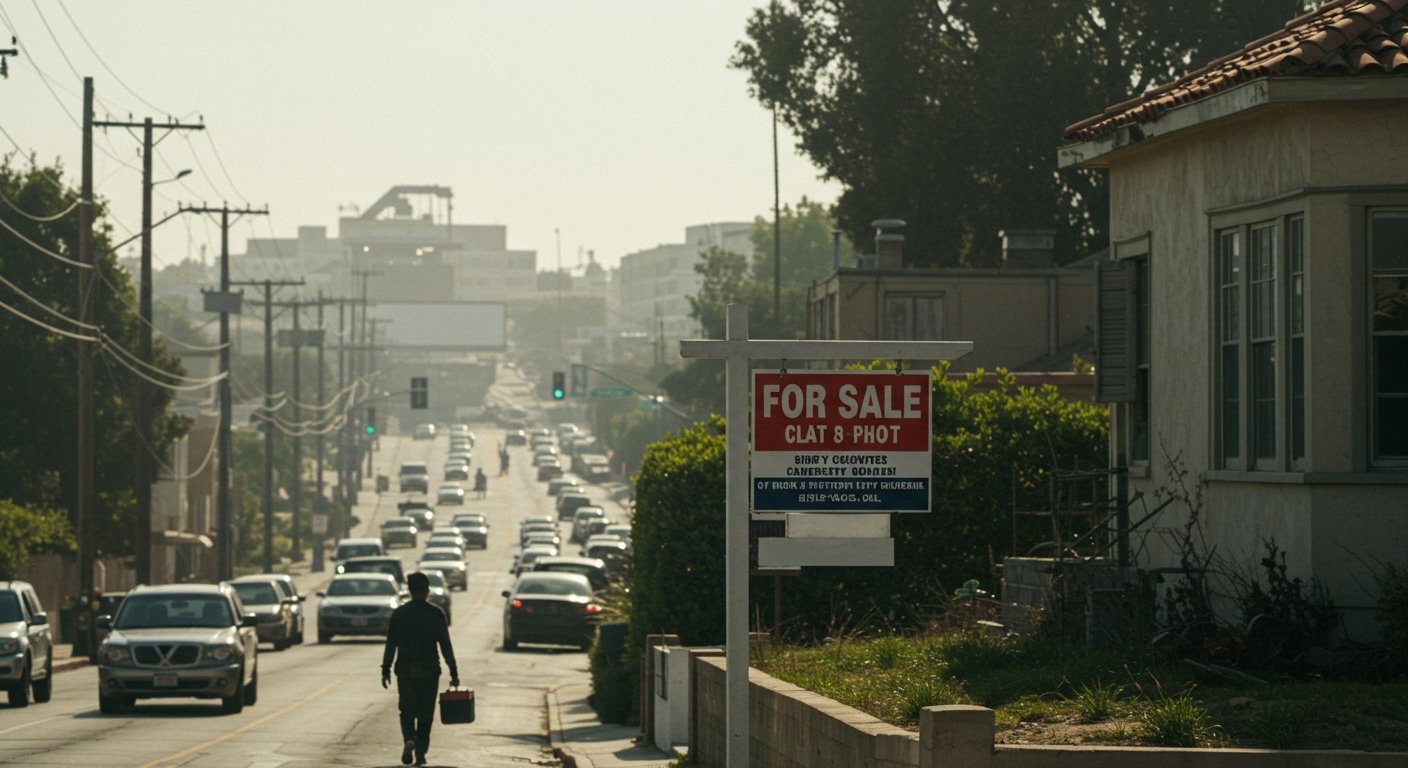Los Angeles, California – A notable shift is underway within the American film industry, with a growing number of professionals, from A-list celebrities to vital below-the-line crews and support staff, reportedly choosing to leave their long-standing base in Los Angeles. This departure, often described as an ‘exodus,’ is beginning to exert a discernible influence on the region’s famed housing market and its broader economic landscape.
The forces driving this relocation are multifaceted and have accumulated over recent years. Lingering effects from the global COVID-19 pandemic, which disrupted production models and altered work-life perceptions, combine with persistent local challenges. Issues such as the increasing frequency and intensity of wildfires in California, recent widespread worker strikes that halted production across various sectors of the industry, and the well-documented decline of traditional movie theaters, impacting revenue streams and production strategies, have all contributed to a shifting environment.
Adding significant momentum to this trend are the often-generous tax incentives offered by other states and international locations eager to attract film and television production. These incentives have become so compelling that a majority of films are now reportedly being produced outside of Los Angeles. This fundamental shift in where content is created directly prompts industry workers – whether actors, directors, editors, or technicians – to relocate to where the jobs are.
High-Profile Departures and Workforce Impact
While the relocation of production is a primary driver, personal and practical considerations also play a significant role. Several notable figures have reportedly joined the ranks of those leaving California. Among them are actors such as Mark Wahlberg, who has been vocal about seeking a different environment, Chris Evans, Matthew McConaughey, Glenn Powell, and Rachel McAdams. Their decisions, often cited as being motivated by desires for increased normalcy away from the constant glare of paparazzi, aerial drones, and pervasive camera phones, highlight the lifestyle pressures faced by those in the public eye in a place like Los Angeles.
However, the impact of dwindling local production is particularly acute for the vast network of support staff, including crew members, technicians, and administrative personnel. With fewer projects filming within the Los Angeles area, the pool of local employment opportunities shrinks, making relocation less of a choice and more of an economic necessity for many.
Future Challenges and Economic Analogies
Looking ahead, impending changes further cloud the outlook for remaining residents. Upcoming new fire maps for California, anticipated to be released in late July 2025, are expected to create further challenges, particularly concerning property insurance availability and costs in fire-prone areas, which include many desirable residential neighborhoods favoured by industry professionals.
The cost-to-benefit ratio of living in Los Angeles is also a frequently cited concern. While homes in many areas remain extraordinarily expensive, some industry insiders feel that the increasing density and congestion, coupled with reduced privacy even in high-value properties, diminish the perceived value of residing there compared to other locations offering more space, privacy, or lower costs of living.
In a stark assessment of the situation, one anonymous executive was quoted describing the feeling in Los Angeles as akin to a “Rust Belt crater,” drawing a parallel to “a sad company town where the mill is closing.” This potent analogy underscores a fear that as the core industry moves elsewhere, the city risks facing economic decline similar to areas dependent on manufacturing plants that have shut down.
The combined effect of production incentives elsewhere, evolving industry economics, lifestyle considerations, and local challenges like insurance costs appears to be fostering a significant, ongoing relocation trend among Hollywood professionals, reshaping not only the industry’s geographical footprint but also the character and economy of the city it has called home for a century.





